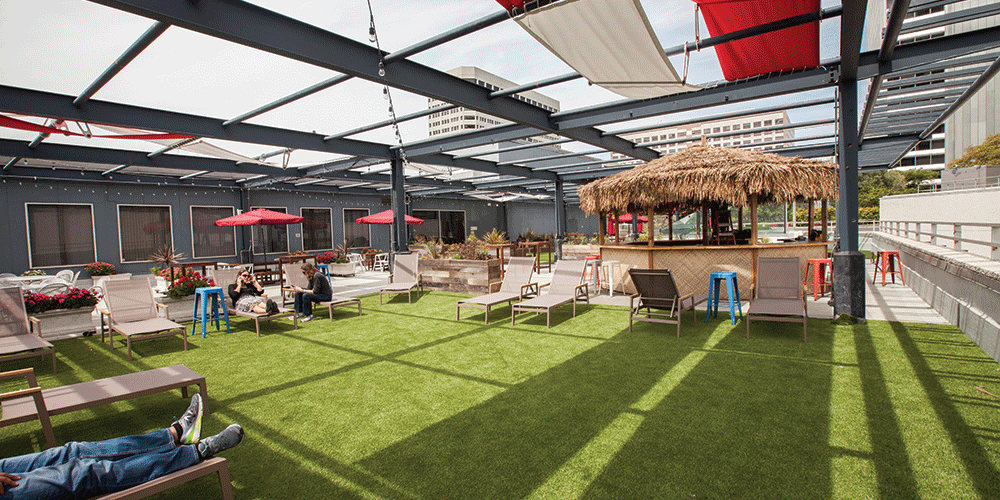Image Source: Google
Introduction
As more businesses are looking for ways to reduce their environmental impact and create a sustainable workspace, commercial synthetic grass installation has become an increasingly popular option. Not only does synthetic grass provide a lush and green aesthetic, but it also requires minimal maintenance and eliminates the need for harmful pesticides and fertilizers. In this guide, we will explore the benefits of commercial synthetic turf installation and provide a step-by-step overview of the installation process.
Benefits of Commercial Synthetic Grass Installation
- Low Maintenance: Synthetic grass requires minimal upkeep compared to natural grass, saving time and resources.
- Cost-Effective: While the initial installation cost may be higher, synthetic grass pays for itself over time with reduced maintenance and water savings.
- Durable: Synthetic grass is designed to withstand heavy foot traffic and harsh weather conditions, making it ideal for commercial spaces.
- Environmentally Friendly: Eliminates the need for pesticides, fertilizers, and excessive water usage, reducing environmental impact.
- Aesthetically Pleasing: Provides a lush and green landscape year-round without the need for constant upkeep.
Commercial Synthetic Grass Installation Process
Before beginning the installation process, it is important to conduct a thorough site assessment and consider factors such as drainage, soil conditions, and usage requirements. Here is a step-by-step guide to commercial synthetic grass installation:
Step 1: Site Preparation
- Remove existing grass, weeds, and debris from the site.
- Grade the area to ensure proper drainage.
- Compact the soil to create a stable base for the synthetic grass.
Step 2: Install Base Materials
- Apply a geotextile fabric to prevent weed growth.
- Add a layer of crushed rock or decomposed granite for drainage.
- Compact the base materials to create a smooth and level surface.
Step 3: Synthetic Grass Installation
- Roll out the synthetic grass and allow it to acclimate to the site for 24-48 hours.
- Cut the grass to fit the dimensions of the area, leaving extra material along the edges for trimming.
- Apply adhesive or seam tape to join the sections of grass together.
- Secure the edges of the grass with landscaping spikes or adhesive.
Step 4: Infill and Finish
- Spread infill material (such as silica sand or rubber pellets) over the surface of the grass to provide stability and support.
- Brush the grass fibers with a power broom to fluff them up and distribute the infill evenly.
- Trim any excess material along the edges and clean up the site.
Maintenance Tips for Commercial Synthetic Grass
- Regularly brush or rake the grass to maintain its appearance and redistribute the infill.
- Remove debris and pet waste promptly to prevent odors and staining.
- Rinse the grass periodically with water to remove dust and dirt buildup.
- Inspect the grass for any damage or wear and tear, repairing as needed.
- Avoid placing heavy objects or furniture on the grass for extended periods to prevent flattening.
Conclusion
Commercial synthetic grass installation offers a sustainable and environmentally friendly landscaping solution for businesses looking to enhance their outdoor spaces. By following the steps outlined in this guide and implementing proper maintenance practices, businesses can enjoy the benefits of synthetic grass for years to come. Consider greening your business with commercial synthetic grass installation today!
